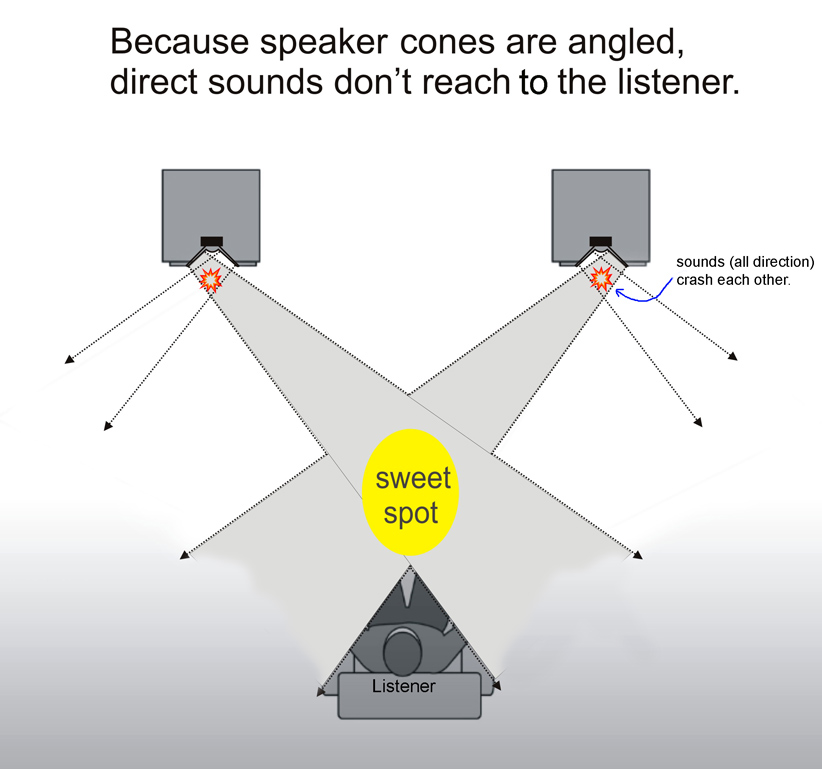I think this was probably meant differently.
They probably meant to refer to toe-in, or, how much the speakers are angled relative to the rear wall. With the speakers flat to the wall behind them the tweeter axes (plural of axis, say axe - ease) are parallel, but as we angle the speakers in (more toe-in) the tweeter axes cross, either behind or in front of the listener.
Extreme toe-in where the axes cross in front of the listener, can help when speakers are placed very close to side walls.
Changing toe-in can affect the imaging and leave you in one of these situations:
- You hear a L and R but no center
- You hear a L and R and center but the space between seems hollow
- You have a clear image from speaker to speaker with no gaps
By the way, most listeners use too much toe-in. Many speakers sound better with no to modest toe-in instead of being pointed directly at your ears.


